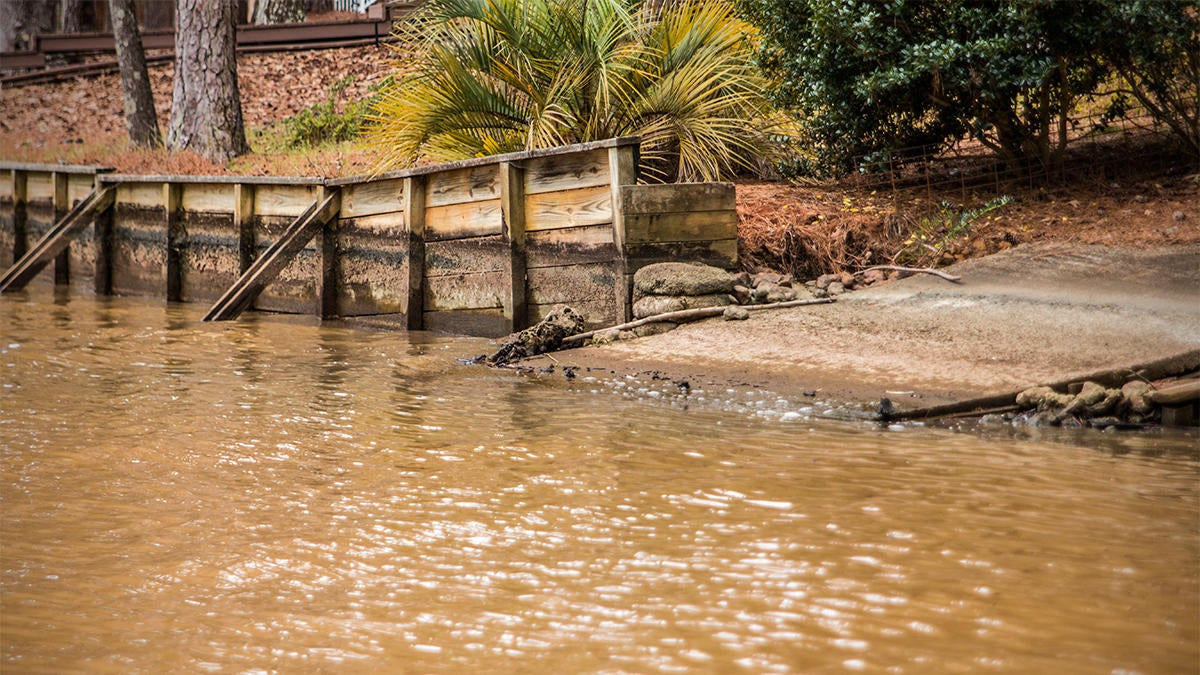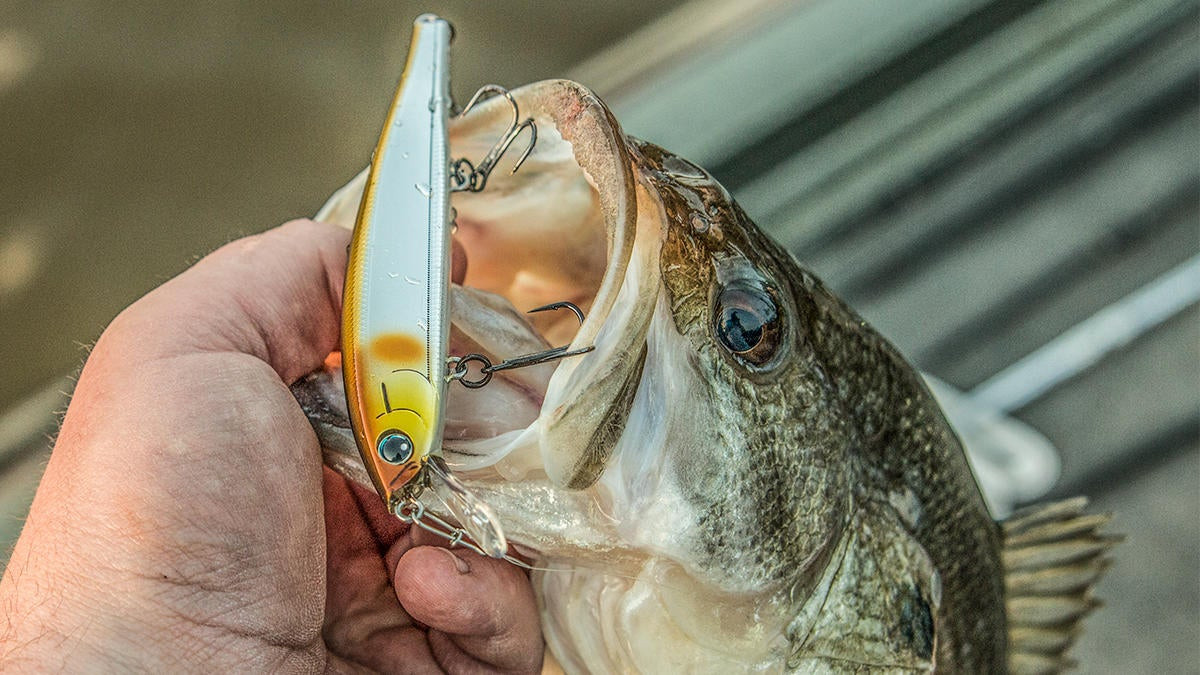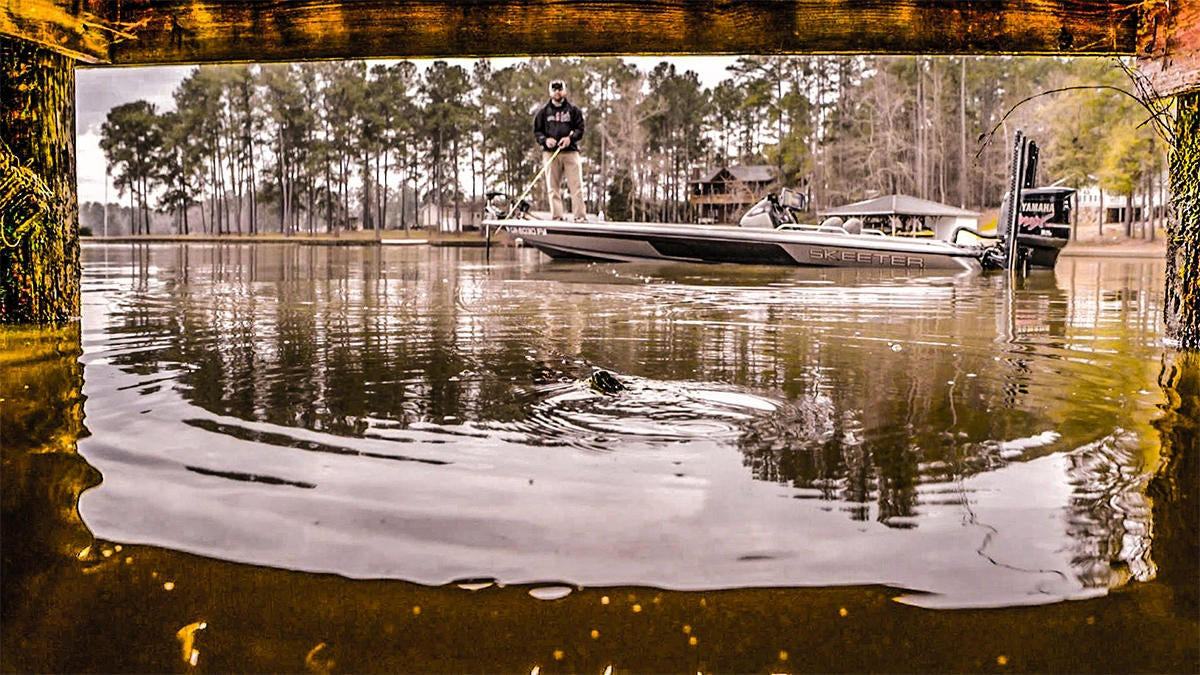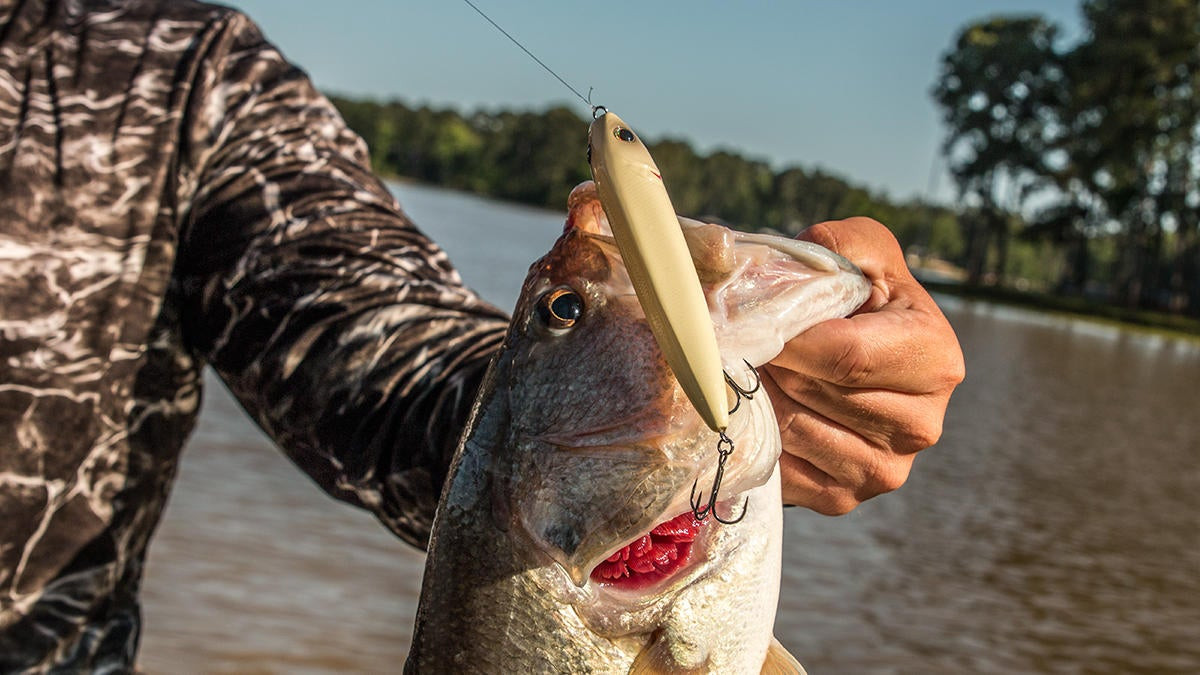The last few months on my home lake has been incredibly tough; probably the toughest I’ve ever seen this lake fish. Now, of course a few guys are out there catching ’em, but for the large majority of anglers, it has been a complete grind. Lots of us have even had trouble finding the motivation to get out there. It’s like volunteering to go get kicked in the mouth.
The large majority of the issue revolves around the water levels. The water has been very low since the spring months and as a result, most of the available cover has an inch or two of water on it. So essentially, all of the good-looking, low-hanging fruit is ruled out. That has forced me to get a little creative and go against the things I’d normally do.
I wanted to put this piece together to help folks in the same situation. A lot of lake levels drop in the summer due to hot weather, drought and even increased water draw from power companies. I figure a lot of you may be dealing with the same frustrations, so I put together the things I’ve learned over the past several months in hopes of helping you increase both the quantity and quality of your catch.

First things first: Where in the world do they go?
I guess that’s million-dollar question, isn’t it? I don’t have a failsafe answer for you on this one, but I can tell you that you have to make yourself a little uncomfortable in low water. You’re likely not going to be able to burn down the bank and fish the visible cover you normally would. There just isn’t enough water on it. So to at least put yourself in the same general area as the fish, it’s important to understand what most bass do when the water level changes.
I could make this a long explanation, but simply put, the bass follow the water. So when the water rises, you’ll often find big bass hanging out in flooded bushes and underneath dock walkways in what’s normally super-shallow water. Conversely, when the water level falls, bass move away from the bank and tend to suspend. They don’t feel comfortable up there in the dirt-shallow stuff. They need a little bit of water over their heads for an increased sense of security.

Don’t be afraid to fish what you can’t see
Okay, so now we have a general idea of bass behavior when the water drops. So what in the world are you supposed to do when all of the sexy-looking cover is nearly high and dry? This goes back to what we just discussed-you have to make yourself a little uncomfortable.
In the photo above, you can tell how low the water is by looking at the isolated dock; it’s a good two feet low. That grass and wood sure does look good, but when I went over there to check it out, there might have been four inches of water on it. There wasn’t a bass anywhere in that grass.
I figured the bass wouldn’t completely leave the pocket just because of a temporary water fluctuation and I knew they weren’t in the grass, so I figured maybe they were in front of the grass and somewhat suspended due to the change. I started making parallel casts with a squarebill roughly 10 feet in front of the grass bed and I ended up catching several quality bass down that stretch of bank.
There were a few stumps out in front of the grass bed, but nothing that I would consider a killer spot for a bass to hang out. The best I could tell, they were just kind of hanging out in the middle of the water column in some sort of a staging area. If the water came up, they could quickly get back into their preferred grass bed but if the water dropped even more, they could easily reach deeper water with just a few kicks of their tail.
So if you show up to the lake on a Saturday morning and the areas you caught ’em in all week are nearly high and dry, try not to let that spin you out. In most situations, those fish aren’t going to entirely leave an area. Fish in front of your normal shoreline cover and see what happens. It’s going to feel weird at first, but when that first big bass smokes your plug, you’ll get confidence in a hurry.

A jerkbait can be a major equalizer
If you’re dealing with clear and low water, you’d be absolutely crazy not to have a jerkbait rigged and ready to go. I don’t say that to sound ugly, but rather to make a point. To be quite honest with you, a jerkbait saved my spring fishing this year. Every single time the water was low and I had more than two feet of clarity in the water, I would smoke ’em on a Duel Hardcore Minnow Flat SP Jerkbait. I had afternoons where I’d catch more than 40 fish when some of my buddies were struggling to catch a limit.
Because bass tend to suspend and, at times, get a little lethargic with sudden water level changes, a suspending jerkbait is an outstanding choice. Each time you twitch that jerkbait and pause it, the lure suspends in the water column and stays eye-level with the bass. Even if they’re lethargic, that flashing and slashing action of the jerkbait is enough to grab their attention. When you pause it for a few seconds, they just have a hard time not reaction to it and attacking it.
Again, I had most of my success paralleling previously productive shoreline cover with this jerkbait. It looked like I was fishing in the middle of nowhere, but I had some stretches where I could pull up and call my shots. Again, they were just kind of hanging out in the middle of the water column.
It’s also worth noting that this technique is much better on a sunny day with a little breeze. This is a very visual presentation and the sun really helps that jerkbait flash and attract bass from a distance. A breeze is also helpful because not only does it position baitfish on windblown banks a bit better, but the chop on the water helps mask some of the unnatural characteristics of your jerkbait (hooks, split rings, etc.) while it’s paused.

Break out Kermit when the sun gets high
There aren’t many things I like more than working a topwater frog over shallow cover. Not only is the anticipation simply addicting, but this technique can produce some of your biggest bass of the year. When that water level is low and your favorite grass is nearly on dry ground, don’t you dare put that frog away. Sure, frogs are awesome around grass. But it’s a lot more effective around over cover than you might think.
When the sun gets high and those dark, hard shade lines form, find some boat docks and put ol’ Kermit to work. Because the water is low, however, you’ll do things a little differently than you normally would. Target the front dock posts of every dock with that frog and watch what happens. This can create some of the biggest blowups you’ve ever seen.
Bass always love to be around docks and even in low water, they’re going to do everything they can to be around them. It’s important to remember, however, that the bass move with that water level, so where on a boat dock is a bass most likely to position? If you guessed the front posts, you’d be correct.
I’ll skip and pitch that frog a few feet past the front posts and as the frog comes within a foot of each post, I’ll drastically slow my retrieve. I want to “walk the dog” with that frog and move it towards me as little as possible. Essentially, I want it to walk in place while that big bass just stares at it. Even if it’s not actively feeding, the bass can’t take that commotion for too long. Heck, it might even eat the frog just to get it out of its face.

Cover water with a walking topwater plug
I’ve always like to fish fast and there are some days when I feel like I just can’t possibly fish quickly enough. Whether the prevailing pattern dictates I run through a lot of water or I just wake up in a certain mood, I’ll definitely run down a trolling motor battery.
One of the best ways I’ve found to efficiently cover water in low-water situations is with a walking topwater plug. I never really did this much until my buddy, Matt Henry, showed me its effectiveness about eight years ago. It was just about this time of year, so it was hotter than blue blazes and of course, Georgia Power had our lake low enough that you could have walked under the boat docks. The bite was awful and Matt broke out a topwater plug and absolutely blew my mind.
Within about two hours, that joker had caught north of 20 pounds by paralleling the bank and blind-casting that topwater 15 yards in front of the shoreline. The water was crystal clear and we had been seeing some roamers earlier in the day but we couldn’t get them to bite… until he whipped out that dang topwater lure.
I’ll admit that this is still tough for me to do sometimes because it’s strange making casts to things you can’t physically see. I’d much rather flip and pitch around isolated cover, but if you can make yourself stick to this pattern for a full day and toss a topwater plug such as a Berkley Drift Walker (pictured) or something similar, I’m willing to bet you’ll have a nice sack of fish before sunset.

Get off to a quick start with a buzzbait
I live on one of the most heavily pressured tournament lakes in the state; every single Saturday morning sounds like the Daytona 500 from my porch. I’ve noticed over the years that it’s very rare for out-of-towners to win a tournament on this lake. I think I’ve figured out why, though.
These guys will take Friday off work and come practice from sunrise to sunset for Saturday’s big tournament. The water is normally much higher here during the week (less water movement for decreased power demand) and in turn, the fishing is much better. The fish get where they’re “supposed” to be if that makes sense. They’ll get in the grass beds, way underneath boat docks, in some bushes… they just get places that make sense.
So these guys bust ’em on Friday or at the very least, catch a respectable limit. They’re high on the hog going to bed that night and once they show up Saturday morning, there ain’t a lick of water in the lake and their best stuff is high and dry. This completely spins them out and as a result, many of them rarely weigh a limit.
This has certainly happened to me as well. I’ve found, however, that fishing a buzzbait first thing in the morning can be an excellent option. Sometimes this bite only lasts for an hour or two, but it’s an awesome way to catch your biggest fish of the day. Remember how we talked about targeting the fronts of docks with frogs once the sun gets high? You’re going to do the same thing with a buzzbait in lowlight conditions. This lets you cover water very quickly and put your lure in front of as many bass as possible to capitalize on those active early morning bass. Whatever you do, make sure you knock your buzzbait off of the dock posts. If you’re not making contact with the wood, your chances of a bite will drastically decrease.
So there you have it; those are the best ways I know how to catch bass in those annoying low-water conditions. You’re not always going to go out there and bust ’em in these situations, but don’t let it mess with your confidence. Some of the better days I’ve ever had have occurred in low water, so try these techniques and let us know how you do. I bet you’ll see an improvement.












